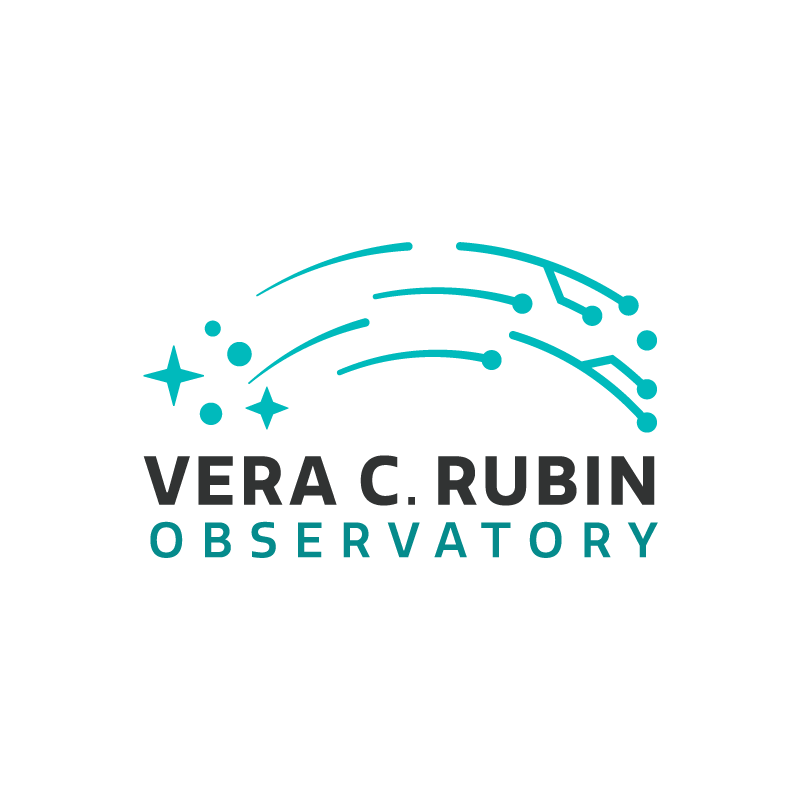Rubin Digest 16 November 2021
16 November 2021
Project & Science News
Rubin Observatory will host an exhibit booth at the American Astronomical Society Winter Meeting (AAS239), to be held January 9-13, 2022, in Salt Lake City, UT. There is also a Rubin Observatory Open House scheduled during the meeting, on the evening of January 11th.
At SLAC National Accelerator Laboratory, the LSST Camera team achieved full cooldown of the focal plane and electronics on November 3rd, with both cooling systems running together for the first time since January 2021. Read more about the achievement in this news item.
The Rubin Auxiliary Telescope (Aux Tel) team has continued conducting on-sky observing runs on a monthly basis, with a focus on gathering data for engineering performance analysis. The team shared this image, taken on November 3rd during the most recent Aux Tel observing run, which shows the effect on stars observed during a 5.7 magnitude earthquake centered north of Santiago, Chile. Earthquakes are common in Chile, and many design strategies and procedures have been employed to protect Rubin summit facilities and equipment (and staff, of course!) from effects caused by earthquakes.
Following recommendations from the Survey Cadence Optimization Committee, Rubin Observatory has released v2.0 LSST observing cadence strategy simulations. Details are available on community.lsst.org.
Rubin Observatory is extending the deadline for nominations from the science community to serve on the Rubin Users Committee (UC). The Committee will give feedback to Rubin leadership, and solicit community feedback, on the Rubin data products and science platform. Self-nominations are encouraged, especially from early-career scientists (postdocs and junior faculty), and those who identify as under-represented in astronomy (by race, gender, etc). Nominations are also encouraged from those with expertise in gravitational weak lensing, astrometric and photometric calibration techniques, solar system science, and survey database techniques. More information on how to apply can be found here; the extended deadline is December 5th.
Rubin Observatory swag items, including t-shirts, coffee mugs, tote bags, and more, are available for purchase in our not-for-profit online store.
Rubin in the Media
Richard Dubois, SLAC senior staff scientist, discusses how SLAC—as Rubin Observatory’s US Data Facility—plans to address the challenge of hosting Rubin Observatory’s massive data set in an interview published on the SLAC website on November 3rd. Read it at this link.
Operations Updates:
New resources with information on the planned Rubin data products, designed to be citable in funding proposals, are now available for the science community. Find links to a slide deck, a recorded presentation, and updated websites that provide succinct descriptions of the data products on community.lsst.org.
Announcements & Opportunities:
Congratulations to Lauren Corlies, who was promoted to Head of Rubin Education and Public Outreach (EPO), effective October 1st. Lauren has been with the Rubin EPO Team for three years, joining as the EPO Scientist and then taking on the additional responsibility of EPO Deputy. Lauren will lead the team as they finish construction and launch the EPO program in late 2022.
Timothy Noble joined the Rubin pre-Operations Data Production group on October 1st; he is based at Rutherford Appleton Laboratory (RAL) in the UK. An expert on data transfer, and the Rucio system in particular, Timothy has begun working on transfer tests among the data facilities.
Nima Sedaghat Alvar joined the Data Management subsystem as Postdoctoral Researcher on November 1. Nima will be serving as a machine learning specialist for the Alert Production Team at the University of Washington.
The University of Washington (UW) and Carnegie Mellon University are looking for a seasoned and experienced Senior Software Manager to build and lead a distributed team of software engineers to design and implement a cloud-based science analysis framework that can search, analyze and annotate data of the volume and complexity of Rubin Observatory’s Legacy Survey of Space and Time. Details about the position are available from both UW and Carnegie Mellon; applications will be reviewed jointly.
Applications are being accepted for Community Scientists at Rubin Observatory, for astronomers with experience in wide-field optical imaging surveys, large scientific collaborations, web-based data analysis platforms, and/or research aligned with the main science goals to join the Rubin Observatory's Community Engagement Team (CET). Details are available at this link.
Info for Project Members:
If you’d like to schedule a one-on-one meeting with Victor or Steve, please fill out this form to indicate your preferred (and backup) date and time.
There is also an anonymous “suggestion box” for anyone to offer feedback at this link.
Upcoming Meetings with Rubin Observatory Involvement
(those with an asterisk* are LSSTC funded):
2021 |
|
|
November 16-17 |
LSST Survey Strategy Workshop, Virtual |
2022 |
|
|
January 9-13 |
239th AAS Winter Meeting, Salt Lake City, UT |
|
January 11 |
Rubin Observatory Open House at AAS 239, Salt Lake City, UT |
|
January 26-27 |
AURA Management Council for Rubin Observatory (AMCR) Meeting, Tucson, AZ |
|
February 21-25 |
Dark Energy Science Collaboration (DESC) Meeting, virtual |
Upcoming Deadlines:
2021 |
|
|
December 5 |
|


